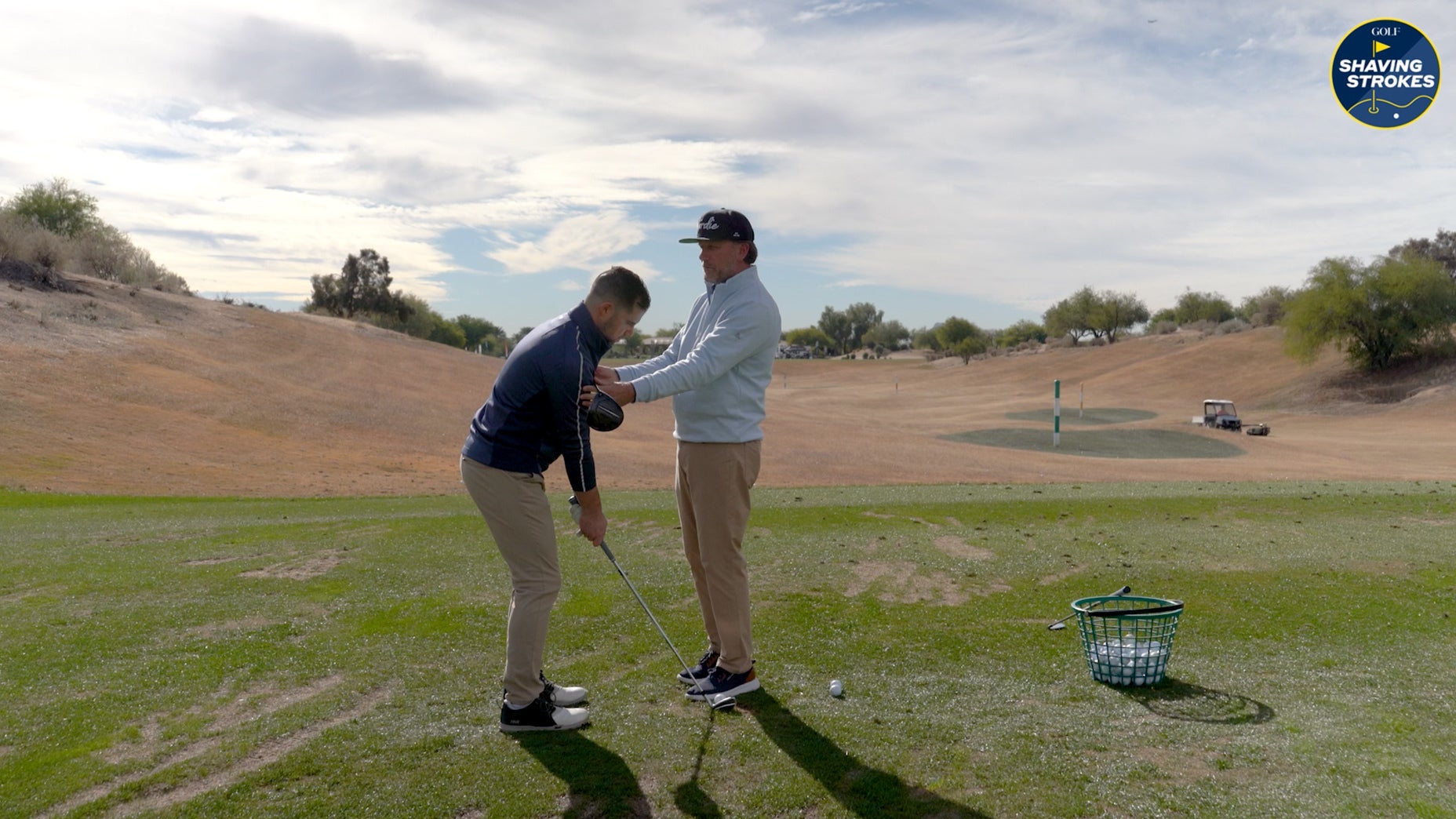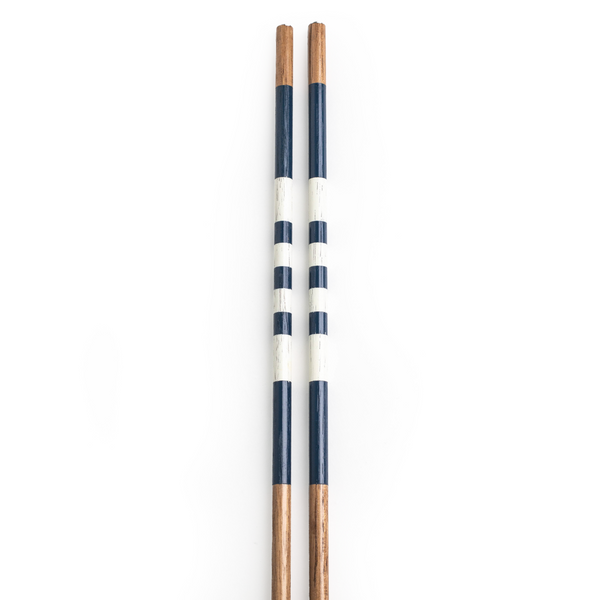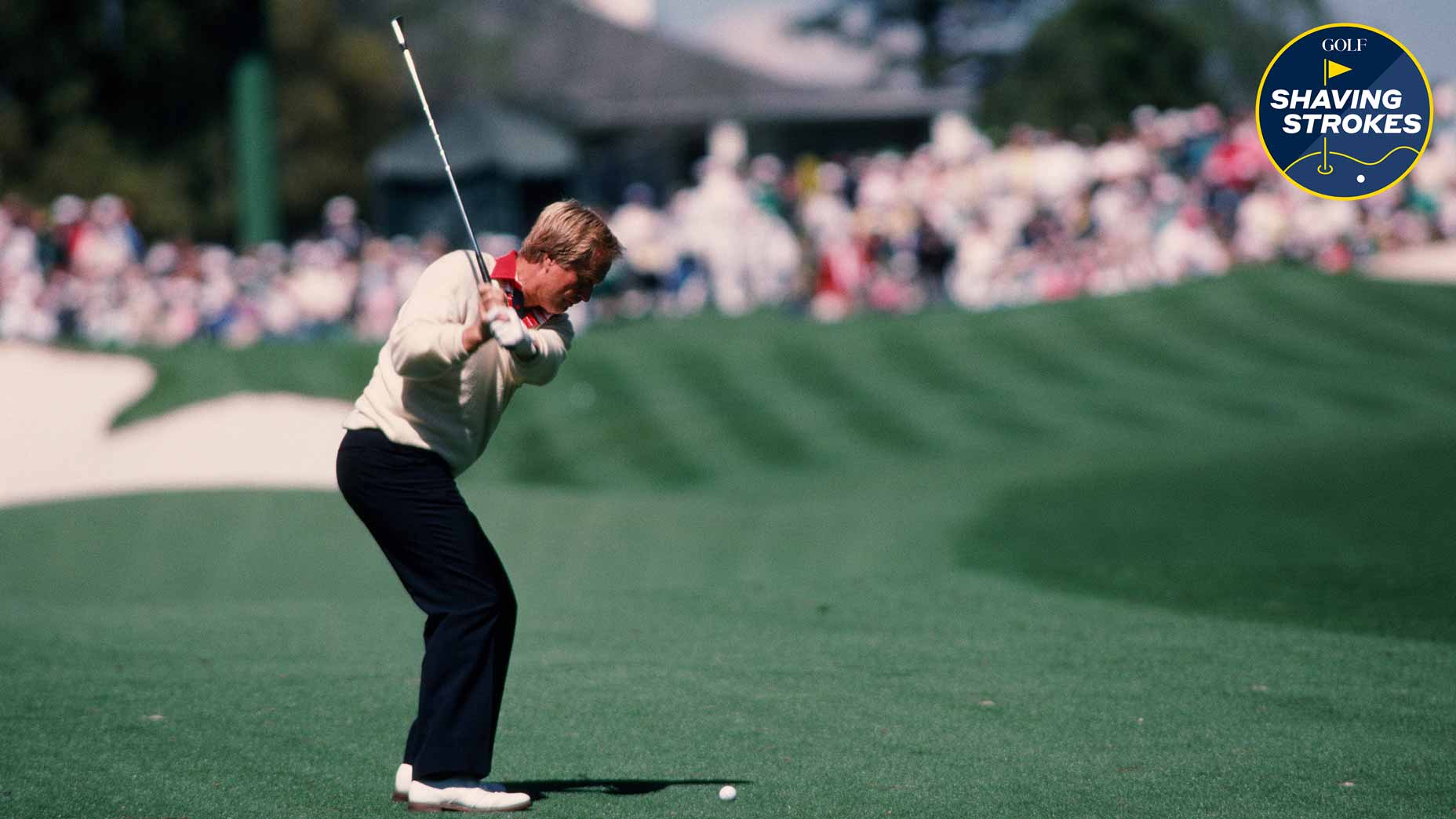
Too many players only think of ball position relative to their feet.
Getty Images
Welcome to Shaving Strokes, a GOLF.com series in which we’re sharing improvements, learnings and takeaways from amateur golfers just like you — including some of the speed bumps and challenges they faced along the way.
Ball position in golf is one of the most important factors in hitting a good shot — yet so many amateurs still overlook it during their pre-shot process.
For instance, most mid-to-high handicappers know it’s recommended to position the golf ball on the inside of their lead foot when using a driver. This allows the player to swing up on the ball, giving them a better opportunity to launch it.
But next time you go to the driving range, look around at how many golfers still don’t do this, and just set up to the ball with it (typically) in the center or even the back of their stance.
Thing is, using your feet isn’t the only way to determine what your ball position should actually be, as the body plays a big role in it, too.
To understand this, take a look below at what GOLF Teacher to Watch Kelvin Kelley has to say, as he explains why your golf ball position should also be relative to your body.
Why using your body is important to determine golf ball position
The concept of golf ball position being only relative to the feet — with the idea that, after taking your stance, the ball should be in the middle of the feet with the irons, and the more towards the front foot with the driver — is partially true, but there’s more to it.
Instead of only thinking about ball position using your feet, take into account where your mass (spine and upper body) is positioned relative to the ball at address. This is most critical when looking for solid contact. It’s why the angles of your body are so important.
The photo below shows what the spine and mass look like at the top of the swing. Notice how they’re behind the golf ball.
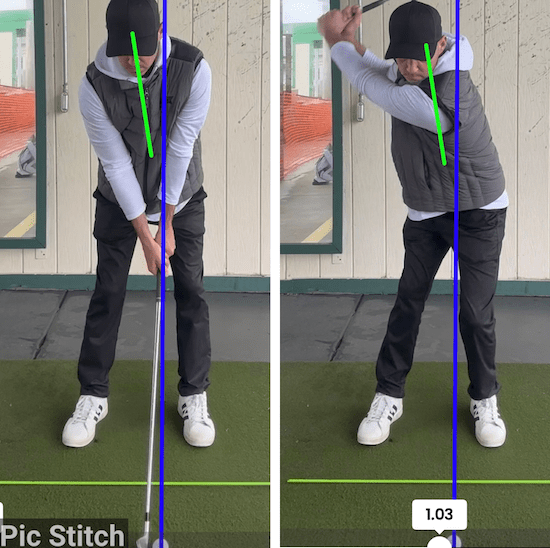
Image via Kelvin Kelley
By starting this way, your swing is much more efficient, as the body can move forward and around toward the target in the downswing. This also allows you to hit with the entirety of your mass and body going in the optimal direction.
To picture this, think of a boxer ready to punch a boxing bag. The boxer would have their body positioned slightly behind the bag to punch forward into the bag. A boxer that sets up in front of the bag would have no body mass to use into the punch.
This concept in golf is nothing new, as the picture below shows Jack Nicklaus using it with a driver, mid-iron, and short wedge.
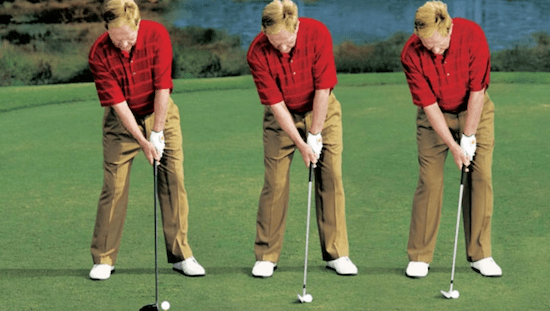
Image via Kelvin Kelley
Another example comes from Ben Hogan’s book, “Five Lessons“, where he described his ball position method.
Hogan’s left foot would stay the same distance from the ball regardless of club, while his trail foot would progressively widen as the club got longer. The distance that the trail foot moved back would also move his upper body.
Another note to pay attention to is how open or closed the feet should be for each club in your bag. The image below is a good guide to follow — but remember, this is just a baseline. The ball should be moved relative to the feet when hitting a certain flighted shot.
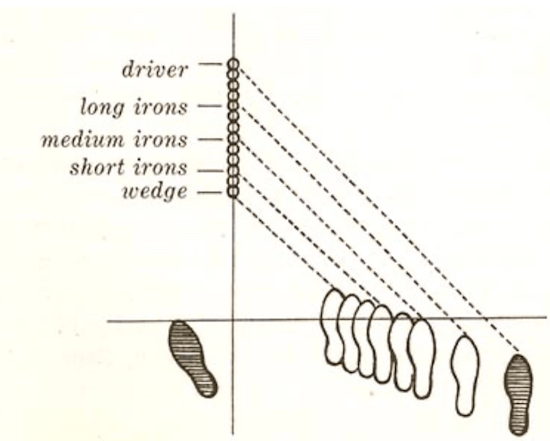
Image via Kelvin Kelley
To play with the proper angle of attack, you should slightly drop the trail foot back when using longer clubs. This promotes a more shallow attack angle, as the body can slightly close. For shorter irons, open the feet, which influences a more downward and across strike since the body will be more open.
By rethinking the ball position relative to your body at impact, you’ll allow for a better attack angle and more opportunities of hitting it flush.
The Nautical
$79
100% Genuine Hickory
Length: 45″ / Diameter 3/8″
Medium-Dark Stain
Navy/White Color Combo
Gloss Protective Coating
Nickel End Caps
High Quality Golf Alignment Sticks
View Product

